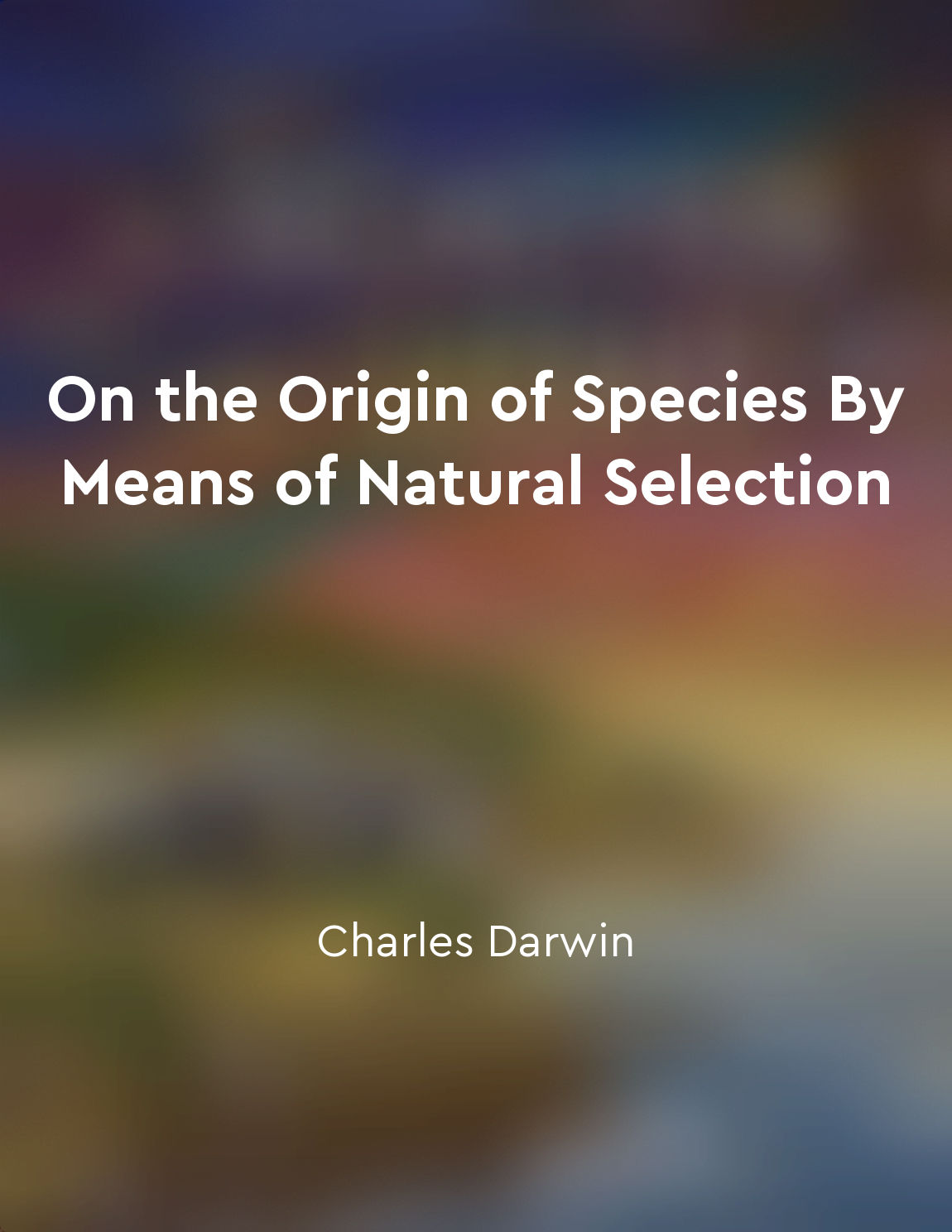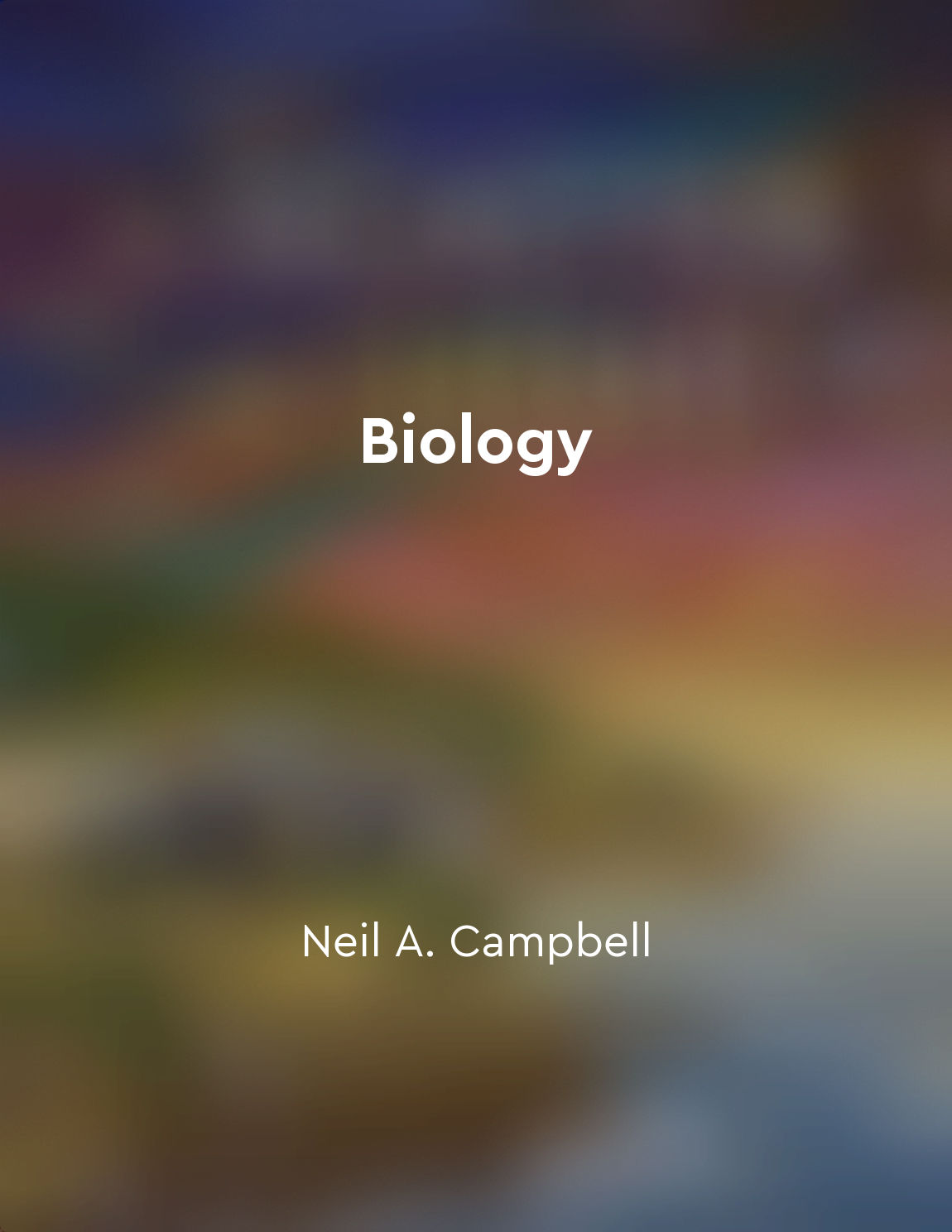Diversity of life on Earth from "summary" of Biology by Neil A. Campbell
The incredible variety of living organisms that inhabit our planet is a testament to the diversity of life on Earth. From the tiniest microorganisms to the largest animals, the range of forms and functions found in nature is truly astounding. This diversity is not just limited to the differences in size or shape, but also extends to the ways in which organisms interact with their environment and each other. One of the key principles of biology is that all living things share a common ancestry, despite their vast differences in appearance and behavior. This concept, known as evolution, explains how the diversity of life on Earth has arisen over billions of years through a process of natural selection. Through this mechanism, organisms that are best adapted to their environment are more likely to survive and reproduce, passing on their advantageous traits to future generations. The study of biodiversity encompasses not only the vast array of species that exist, but also the genetic diversity within populations, the variety of habitats and ecosystems, and the interactions between different organisms. Biodiversity is not static, but rather dynamic and constantly changing in response to environmental pressures, such as climate change, habitat destruction, and human activity. Understanding the diversity of life on Earth is essential for conservation efforts, as well as for advancing our knowledge of how living organisms function and evolve. By studying the relationships between different species and their environments, scientists can gain insights into the complex web of life that sustains ecosystems and provides essential services to humanity.- The diversity of life on Earth is a fundamental aspect of biology that reflects the interconnectedness and complexity of the natural world. By appreciating and studying this diversity, we can gain a deeper understanding of the origins and evolution of life, as well as the importance of preserving and protecting the rich tapestry of living organisms that inhabit our planet.
Similar Posts
Microbial communities are impacted by diet and lifestyle choices
One of the key insights from 'The Hidden Half of Nature' is the idea that our diet and lifestyle choices can have a significant...

Complexity arising from simple beginnings
Darwin's theory of natural selection posits that all complex life forms we see today have arisen from much simpler beginnings. ...
The survival of one species affects the survival of others
The interconnected web of life is a fundamental truth of our planet. Every species, no matter how big or small, plays a vital r...

Complexity arising from simple beginnings
Darwin's theory of natural selection posits that all complex life forms we see today have arisen from much simpler beginnings. ...
Life is a topic that engages both scientists and nonscientists
Life, with its myriad complexities and mysteries, has long been a subject of fascination for both scientists and nonscientists ...
Sexual reproduction promotes genetic diversity
Sexual reproduction is a fundamental process in biology that involves the fusion of gametes from two parents to create genetica...

Geographic isolation leads to speciation
Darwin proposed that when a population becomes geographically isolated, it can lead to the formation of new species over time. ...
Controlling infectious diseases requires a combination of preventative measures and treatment strategies
In order to effectively combat infectious diseases, it is crucial to employ a combination of preventative measures and treatmen...
Deforestation is a threat to biodiversity and climate stability
Deforestation poses a serious threat to the intricate web of life on our planet. As trees are felled at an alarming rate, entir...

Population growth leading to competition
As more individuals are produced than can possibly survive, there must in every case be a struggle for existence, either one in...


